Key Considerations for Selecting Meat Processing Machinery
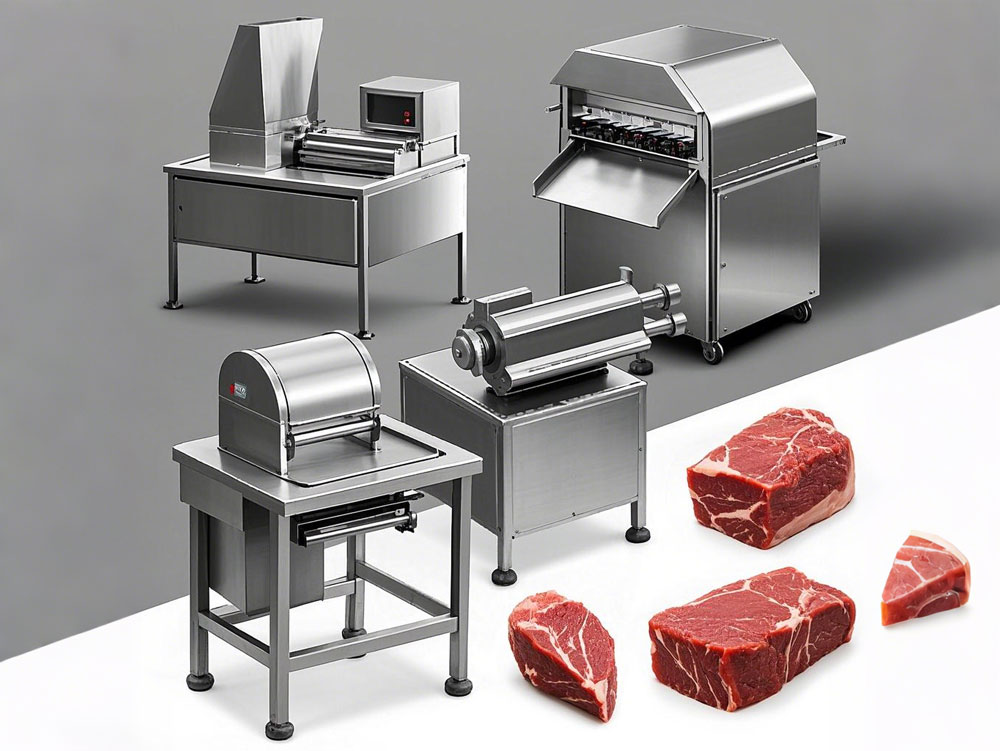
Introduction: What is Meat Processing Machinery?
Defining Meat Processing Machinery and Its Role in the Meat Industry
Meat processing machinery encompasses a wide array of equipment used to convert raw meat into finished products for distribution and consumption. These machines are integral to every stage of meat processing—from slaughtering and cutting to grinding, slicing, packaging, and even further specialized preparations like sausages or minced meat. The equipment ensures uniformity, speed, and safety, which are paramount in the high-demand world of meat production. Without efficient and effective machinery, processors would struggle to meet both the scale and consistency demanded by modern consumers.
The Importance of Efficiency, Safety, and Quality in Meat Processing
In an industry where margins are thin and competition is fierce, efficiency isn’t just a luxury—it’s a necessity. Meat processing machinery must streamline workflows, reduce waste, and expedite production to keep up with demand. However, these benefits can only be realized when safety and quality are prioritized. Properly designed equipment minimizes the risk of contamination, ensures precise cuts, and delivers products that adhere to health and safety standards. The delicate balance of speed and quality is one that meat processors must master to maintain customer trust and regulatory compliance.
Understanding the Meat Processing Industry
The Growth of the Global Meat Processing Sector
The meat processing sector has experienced significant growth over the last several decades. With increasing global populations, rising incomes, and changing dietary preferences, particularly in emerging markets, the demand for processed meat has surged. Consumers expect not only more variety but also higher quality and faster delivery. Consequently, meat processors have invested heavily in advanced machinery to meet this demand while maintaining operational efficiency.
Key Challenges Faced by Meat Processors
Meat processors face a number of persistent challenges, from labor shortages to fluctuating raw material costs, and the ever-present need to comply with rigorous health and safety regulations. Processing large volumes of meat quickly while adhering to stringent quality control measures can overwhelm even the best-run operations. Moreover, the increasing emphasis on sustainability means that meat processors must now also consider energy use and waste reduction as part of their operational strategy.
How Technology is Transforming the Industry
Technology has become the driving force behind the transformation of the meat processing industry. Automation and robotics have redefined speed and efficiency, reducing reliance on human labor for repetitive or hazardous tasks. Furthermore, innovations like AI-powered sorting, machine learning for yield optimization, and real-time monitoring have allowed processors to improve product quality, reduce waste, and respond more dynamically to market demands.
Types of Meat Processing Machinery
Meat Grinders: Essential for Every Processing Line
Meat grinders are fundamental to the meat processing industry, particularly for operations producing ground meat products such as burgers, sausages, and meatballs. Grinders utilize high-powered motors to process raw meat quickly, reducing large cuts into finer pieces with varying degrees of coarseness. This precision is essential for achieving consistent texture in the final product.
Sausage Stuffers: Crafting the Perfect Sausage
Sausage making is an art, and sausage stuffers are the craftsmen’s tools. These machines are designed to fill casings with a uniform mixture of meat, fat, spices, and seasonings. The ability to control both the speed and pressure allows operators to produce sausages with the perfect texture and uniformity, essential for both flavor consistency and aesthetic appeal.
Meat Slicers: Precision Cuts for a Variety of Meats
Meat slicers are indispensable for processors who specialize in creating uniform slices of meat, whether it’s for deli meats, steaks, or other products. The ability to adjust thickness with precision ensures that each slice is identical, preserving the product’s quality and reducing waste. Modern slicers are equipped with safety features and cleaning mechanisms to ensure both efficiency and hygiene.
Mincing and Dicing Machines: Creating Uniformity and Consistency
Mincing and dicing machines help create precise, uniform cuts for products like diced beef for stew or minced meat for ready-to-cook meals. These machines rely on sharp blades and controlled settings to process meat quickly while maintaining consistency. The result is a higher-quality product that meets consumer expectations for texture and appearance.
Meat Tenderizers: Improving Texture and Flavor
Tough cuts of meat can be transformed into tender, flavorful pieces with the help of meat tenderizers. These machines work by mechanically breaking down muscle fibers, improving both texture and taste. This is particularly important for tougher meats like beef cuts that would otherwise be less desirable. Tenderizing ensures that the meat is more enjoyable for consumers and helps processors extract maximum value from every cut.
How Meat Processing Machinery Works
Overview of the Technology Behind Meat Processing Machines
The machinery used in meat processing relies on a combination of mechanical, electrical, and sometimes digital technologies. Motors, sharp blades, automated conveyors, and advanced controllers all work in tandem to process meat efficiently and precisely. Each machine is designed to perform a specific task, and when integrated into a processing line, they work together to expedite production and maintain high standards of quality.
Key Components of Meat Processing Equipment
At the heart of every meat processing machine are key components like blades, motors, gears, and safety features. The materials used are often stainless steel to prevent contamination and corrosion. Conveyors are also crucial, helping to move meat through various stages of processing while minimizing handling and reducing the risk of cross-contamination.
Automation in Meat Processing
Automation in meat processing machinery allows processors to increase throughput without sacrificing quality. Automated systems can handle repetitive tasks like sorting, grinding, and packaging, which not only improves speed but also reduces human error. Additionally, the use of AI and sensors allows these machines to monitor performance, adjust settings, and maintain optimal conditions in real-time.
Factors to Consider When Choosing Meat Processing Machinery
Production Capacity: Matching Equipment to Your Needs
When selecting meat processing machinery, it's vital to ensure that the equipment aligns with your production capacity. A machine that is too small will cause delays, while one that is too large could lead to unnecessary energy consumption. Matching machinery to production volume ensures that operations run smoothly and efficiently, without overloading the equipment or wasting resources.
Size and Footprint of Machinery
The physical size and layout of machinery in a processing plant are crucial considerations. A machine that occupies too much space can disrupt the flow of the production line, leading to inefficiencies and possible safety hazards. It’s important to select machinery that fits well within the available space and integrates seamlessly into the overall processing setup.
Material Durability and Hygiene Standards
Meat processing equipment is subjected to intense wear and tear, and the materials used must be both durable and hygienic. Stainless steel, known for its corrosion resistance and ease of cleaning, is the preferred material for many machines. Machines must also meet health and safety standards, including the prevention of contamination and ease of sanitation after each use.
Maintenance and Ease of Repair
Regular maintenance ensures the longevity and peak performance of meat processing machinery. Machines should be easy to disassemble for cleaning and parts replacement. Additionally, it’s essential to consider the availability of spare parts and the reputation of the manufacturer for providing support in case of breakdowns.
The Benefits of Investing in Quality Meat Processing Machinery
Enhancing Production Speed and Output
High-quality meat processing machinery accelerates production without sacrificing product quality. By automating repetitive tasks and streamlining operations, these machines allow processors to meet growing market demands more effectively, increasing overall throughput and productivity.
Improving Meat Product Consistency and Quality
Consistency is critical in the meat industry. Whether it’s ground beef or sliced deli meats, customers expect the same high quality every time. Advanced machinery ensures that every product is cut, ground, or processed to the same specifications, enhancing product quality and minimizing waste.
Reducing Labor Costs and Increasing Safety
Automation reduces the need for manual labor in high-risk or repetitive tasks, which lowers labor costs and increases safety in the workplace. Additionally, many modern machines come with built-in safety features that protect workers from injury and improve overall operational safety.
Meeting Regulatory and Food Safety Standards
Food safety regulations are among the strictest in the industry, and meat processors must meet these standards to remain compliant and protect consumers. Modern meat processing machinery is designed to adhere to the highest hygiene standards, ensuring compliance with food safety laws and helping processors avoid costly fines or recalls.
Automation in Meat Processing: The Future of the Industry
How Automation is Improving Processing Efficiency
Automation is the future of the meat processing industry. By reducing manual labor and streamlining operations, automation boosts processing efficiency and allows for greater consistency in product quality. Automated systems can monitor production in real-time, making instant adjustments to optimize output.
The Role of Robotics in Meat Processing
Robotics are playing an increasingly significant role in meat processing, particularly in tasks that are either too dangerous or too monotonous for humans. From robotic arms that handle large cuts of meat to machines that package products, robotics improve both safety and speed.
Smart Machines and IoT in Meat Processing Plants
Smart machines equipped with sensors and connected via the Internet of Things (IoT) allow for real-time monitoring and management of the production process. These machines track everything from temperature and pressure to product quality, helping operators ensure that every step of the process runs smoothly and efficiently.
Meat Processing Machinery and Food Safety
Ensuring Hygiene and Sanitation with the Right Machinery
Food safety begins with proper sanitation. Meat processing machinery that is easy to clean and resistant to bacteria growth is crucial. Modern machinery incorporates features that allow for thorough cleaning and sterilization, ensuring that contaminants do not affect the product.
Preventing Cross-Contamination During Processing
Cross-contamination is a significant risk in meat processing, particularly in the early stages when raw meat is handled. Properly designed equipment minimizes this risk by reducing direct human contact, incorporating hygiene barriers, and preventing the spread of harmful bacteria.
Compliance with Health and Safety Regulations
Meat processing machinery is subject to stringent health and safety regulations. Compliance with these regulations is critical to avoid legal penalties and safeguard public health. Machines designed with these regulations in mind make it easier for processors to stay within the legal framework while maintaining high standards of product safety.
The Role of Cutting-Edge Technology in Modern Meat Processing
The Integration of AI and Machine Learning in Meat Processing
Artificial intelligence and machine learning are increasingly integrated into meat processing equipment to optimize every aspect of production. These technologies analyze data in real-time to make adjustments, predict outcomes, and enhance product consistency, resulting in reduced waste and increased operational efficiency.
Innovative Technologies Improving Product Quality
From precision-cutting machines to advanced packaging technology, modern innovations have vastly improved product quality. These technologies ensure that meat products meet the highest standards for flavor, texture, and appearance, which is essential for maintaining consumer satisfaction.
How Technology Reduces Waste and Improves Yield
Advances in technology help processors extract maximum yield from each carcass while minimizing waste. Through precision cutting and optimized processes, modern machines are able to achieve higher output from the same amount of raw material, ultimately benefiting both the bottom line and sustainability efforts.
Sustainability and Eco-Friendly Practices in Meat Processing
Energy-Efficient Machinery for a Greener Operation
Energy efficiency is a crucial factor in modern meat processing operations. Eco-friendly machines designed to consume less power help processors reduce their carbon footprint while maintaining performance and production speed. As sustainability becomes increasingly important, energy-efficient equipment will play a central role in the industry.
Reducing Waste Through Modern Meat Processing Equipment
Advanced meat processing machinery is designed to minimize waste by improving yield and reducing byproduct loss. Innovations like automated trimming and optimized cutting technology allow processors to extract the most value from each piece of meat, reducing environmental impact.
How Sustainable Practices Benefit the Meat Processing Industry
Sustainable practices are no longer just an ethical consideration—they are also an economic one. By adopting energy-efficient equipment and reducing waste, meat processors can lower costs, improve their environmental impact, and cater to an increasingly eco-conscious consumer base.
Frequently Asked Questions (FAQs)
What is the importance of choosing the right meat processing machinery?
Choosing the right meat processing machinery is crucial to ensuring optimal production efficiency, product quality, and food safety. The correct equipment enhances processing speed, reduces waste, and maintains consistency in the final products. Additionally, it helps processors comply with stringent health and safety regulations, reduce labor costs through automation, and meet the growing demand for high-quality meat products.
How can meat processing machinery improve food safety?
Food safety is a top priority in meat processing, and modern machinery plays a vital role in maintaining hygiene standards. Machines are designed with features that prevent contamination during processing, such as easy-to-clean surfaces, stainless steel components, and automated systems that minimize human contact. These safety features help processors avoid cross-contamination and ensure that the final product meets regulatory food safety standards.
What are the benefits of automation in meat processing?
Automation in meat processing enhances efficiency by reducing human labor, increasing production speed, and improving consistency. Automated systems can handle repetitive tasks like sorting, grinding, and packaging, freeing up workers for more complex tasks. Additionally, automation helps processors monitor the production process in real-time, making adjustments to improve quality, reduce waste, and ensure product uniformity.
How does technology affect meat processing machinery?
Technology has revolutionized meat processing machinery, introducing advancements like artificial intelligence (AI), robotics, and machine learning. These technologies help processors optimize every stage of production, from sorting and cutting to packaging. AI-powered machines can predict and optimize yields, robotics reduce the need for manual labor, and machine learning allows for real-time adjustments, resulting in improved operational efficiency, reduced waste, and enhanced product quality.
What is the role of sustainability in meat processing?
Sustainability in meat processing is becoming increasingly important. Modern meat processing machinery is designed to minimize energy consumption, reduce waste, and improve yield. Energy-efficient machines help processors reduce their carbon footprint, while optimized cutting technology reduces byproduct loss. These sustainable practices benefit not only the environment but also the profitability of meat processors, as they lower operating costs and meet consumer demand for eco-friendly practices.
How do I choose the right meat processing machinery for my business?
When choosing meat processing machinery, several factors must be considered: production capacity, size and layout of the machinery, material durability, hygiene standards, and the complexity of maintenance and repairs. It is essential to select equipment that matches your production volume, fits within your space, and complies with industry standards. Consulting with experts, researching machinery specifications, and considering long-term investment costs are also essential to ensure you make an informed decision.
What are the maintenance requirements for meat processing machinery?
Regular maintenance is essential to ensure the longevity and efficient operation of meat processing machinery. The frequency of maintenance depends on the type of machinery and its usage, but all equipment should undergo routine cleaning, lubrication, and inspection. Scheduled servicing can help identify potential issues early, preventing costly repairs. Keeping a record of maintenance and adhering to the manufacturer's guidelines ensures optimal performance and reduces the risk of unplanned downtime.
What are the costs associated with meat processing machinery?
The costs of meat processing machinery vary widely depending on the type, size, complexity, and brand. Key factors that influence the price include production capacity, the level of automation, and the durability of the machine. In addition to initial investment, ongoing costs such as maintenance, energy consumption, and repairs must be considered. However, investing in high-quality equipment can lead to long-term savings by improving efficiency, reducing waste, and lowering labor costs. Calculating the return on investment (ROI) helps determine whether the machinery is a sound financial choice for your business.
Is it better to buy new or used meat processing machinery?
Whether to buy new or used meat processing machinery depends on your budget, business needs, and the condition of the available used equipment. New machinery often offers the latest technology, improved efficiency, and a warranty, making it a safer long-term investment. However, used machinery can offer significant cost savings if it is in good condition and properly maintained. When considering used equipment, ensure you evaluate its condition, ask for maintenance records, and confirm it meets your processing requirements.
How does meat processing machinery contribute to product consistency?
Meat processing machinery plays a pivotal role in ensuring consistent quality and uniformity in meat products. Machines like meat grinders, slicers, and sausage stuffers are designed to produce precise cuts, uniform textures, and consistent sizes. This reduces variability in the final product, which is essential for maintaining consumer satisfaction. Consistency in production also helps businesses meet regulatory standards and improves overall product appeal.
How can modern meat processing machinery reduce waste?
Modern meat processing machinery is designed with efficiency in mind. Through precise cutting, optimized yield management, and automated sorting, processors can reduce waste by extracting maximum value from each piece of meat. Advanced technologies such as AI-driven machines help monitor product quality in real time, adjusting production parameters to reduce byproduct loss. This results in better resource utilization, reduced environmental impact, and higher profitability.
Can meat processing machinery be customized for different types of meat?
Yes, meat processing machinery can be customized to meet the specific needs of different types of meat, such as beef, pork, chicken, or fish. Different meats require different cutting techniques, equipment settings, and processing speeds. For example, beef may require heavier-duty grinders, while poultry may need specialized machines for deboning. Customizing machinery ensures that each meat type is processed to its optimal quality, enhancing efficiency and product consistency.
What is the role of robotics in the future of meat processing?
Robotics is playing an increasingly significant role in modern meat processing, especially in tasks that are repetitive, dangerous, or physically demanding. Robotic arms are used to handle heavy cuts of meat, move large carcasses, and package finished products, reducing the need for manual labor. Robotics can also be integrated with AI and machine learning to optimize production processes, predict maintenance needs, and increase overall efficiency, shaping the future of meat processing by enhancing both speed and safety.
How can I ensure my meat processing machinery meets food safety standards?
To ensure that meat processing machinery meets food safety standards, it is crucial to choose equipment that is designed with sanitation and hygiene in mind. Look for machines made from stainless steel or other non-corrosive, easy-to-clean materials. Ensure that the machinery is certified to meet relevant food safety regulations, such as those outlined by the FDA or other local food safety authorities. Regular cleaning, maintenance, and inspections should be conducted to prevent contamination and ensure compliance with food safety standards.
Conclusion: Why Investing in the Right Meat Processing Machinery is Crucial
The meat processing industry stands at a crossroads, with increased demand for higher quality, efficiency, and sustainability. Choosing the right machinery is more than just a matter of meeting production needs; it is a strategic investment in the future of the business. By selecting advanced, reliable equipment, processors can increase output, reduce waste, enhance safety, and meet regulatory requirements. The industry’s future will undoubtedly be shaped by innovation, and those who invest in cutting-edge machinery today will be well-positioned to lead tomorrow.
Must-Read Blogs For Chain Restaurants Owner








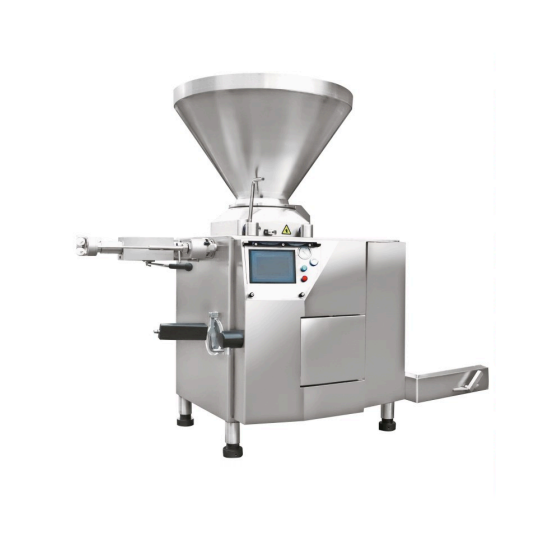
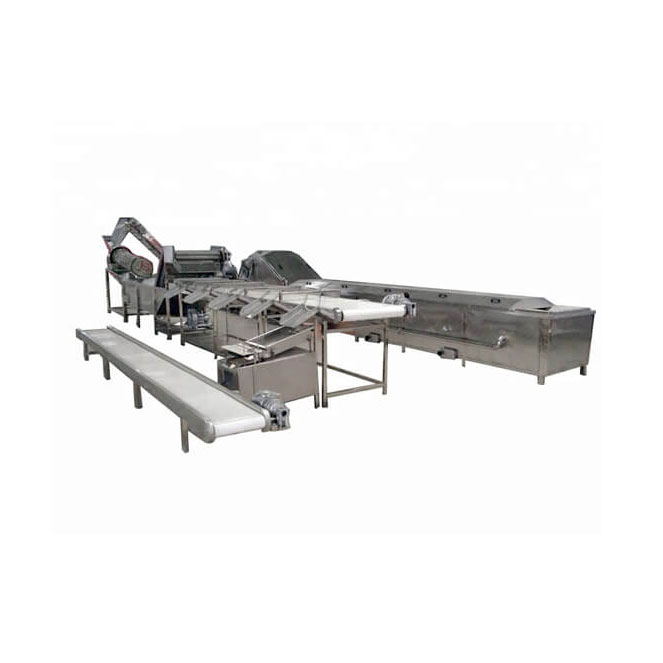
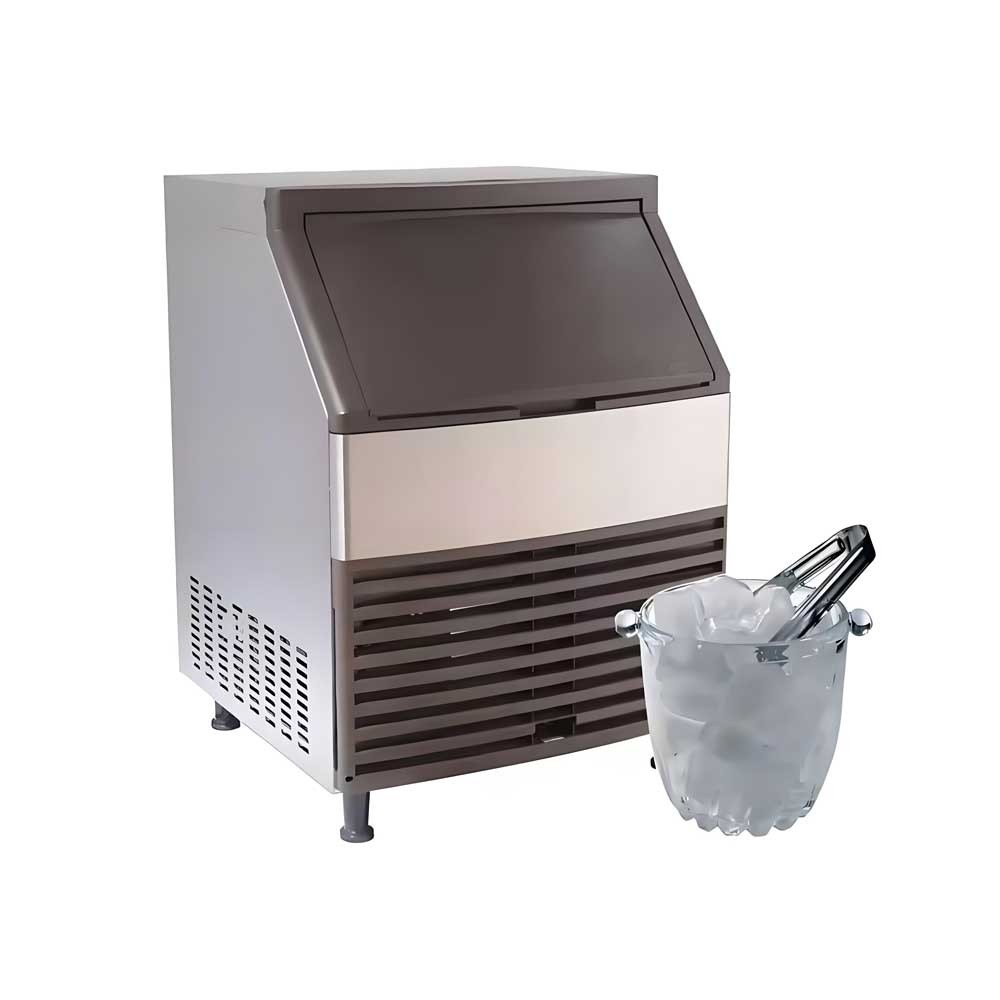
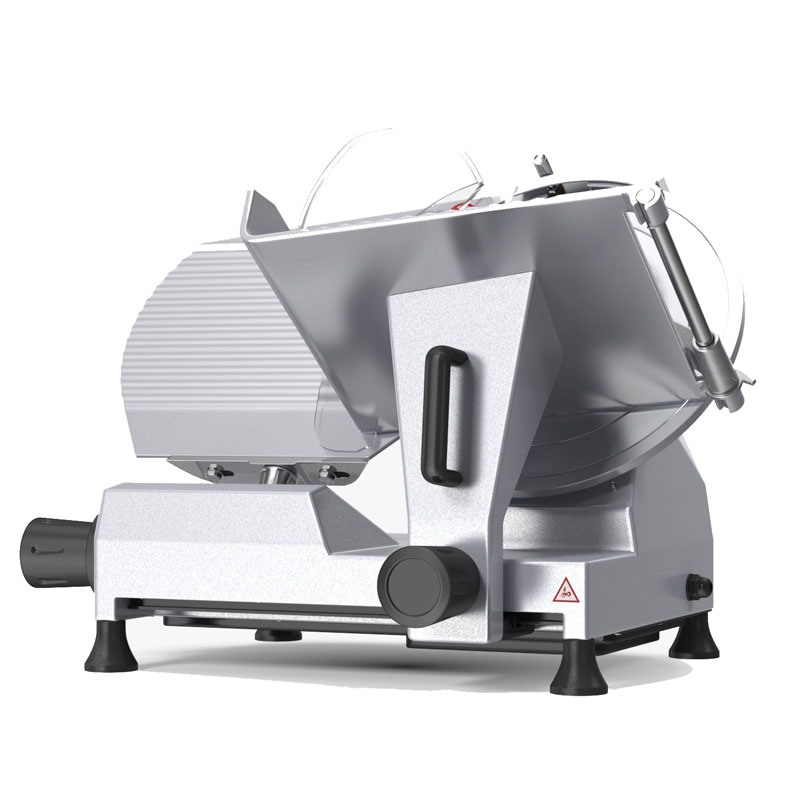 Heavy Duty Meat Slicer Machine
Heavy Duty Meat Slicer Machine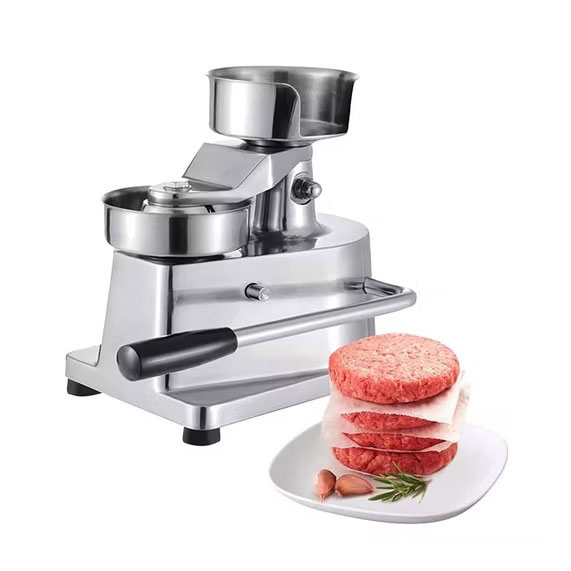 Meat Pie Maker Machine
Meat Pie Maker Machine
Ready to Get Started?